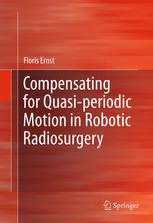

Most ebook files are in PDF format, so you can easily read them using various software such as Foxit Reader or directly on the Google Chrome browser.
Some ebook files are released by publishers in other formats such as .awz, .mobi, .epub, .fb2, etc. You may need to install specific software to read these formats on mobile/PC, such as Calibre.
Please read the tutorial at this link: https://ebookbell.com/faq
We offer FREE conversion to the popular formats you request; however, this may take some time. Therefore, right after payment, please email us, and we will try to provide the service as quickly as possible.
For some exceptional file formats or broken links (if any), please refrain from opening any disputes. Instead, email us first, and we will try to assist within a maximum of 6 hours.
EbookBell Team

4.7
86 reviewsCompensating for Quasi-periodic Motion in Robotic Radiosurgery outlines the techniques needed to accurately track and compensate for respiratory and pulsatory motion during robotic radiosurgery. The algorithms presented within the book aid in the treatment of tumors that move during respiration.
In Chapters 1 and 2, the book introduces the concept of stereotactic body radiation therapy, motion compensation strategies and the clinical state-of-the-art. In Chapters 3 through 5, the author describes and evaluates new methods for motion prediction, for correlating external motion to internal organ motion, and for the evaluation of these algorithms’ output based on an unprecedented amount of real clinical data. Finally, Chapter 6 provides a brief introduction into currently investigated, open questions and further fields of research.
Compensating for Quasi-periodic Motion in Robotic Radiosurgery targets researchers working in the related fields of surgical oncology, artificial intelligence, robotics and more. Advanced-level students will also find this book valuable.